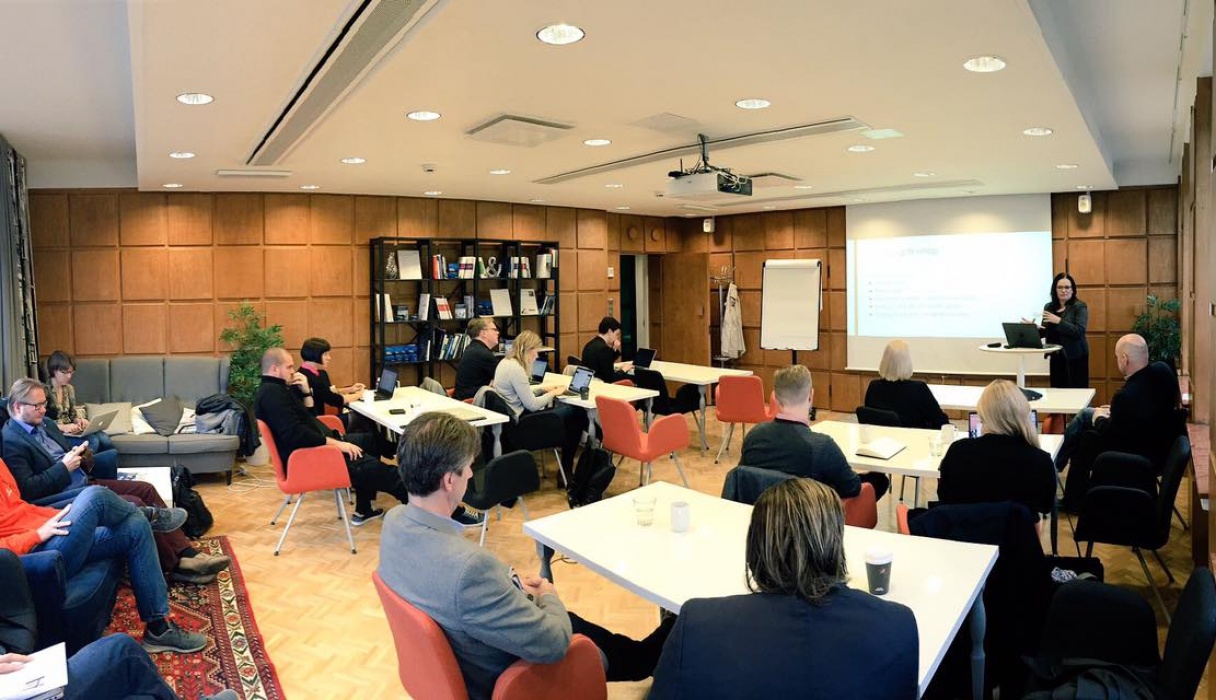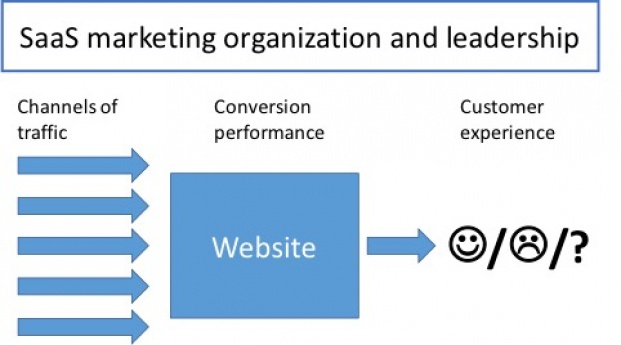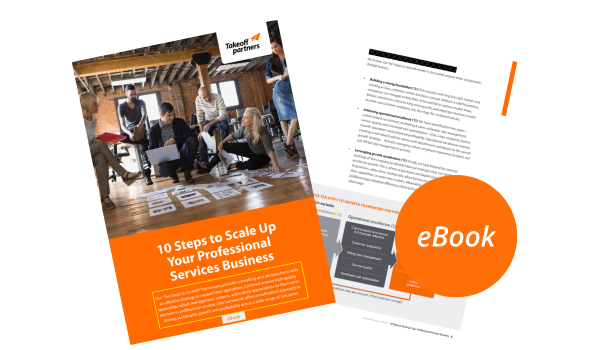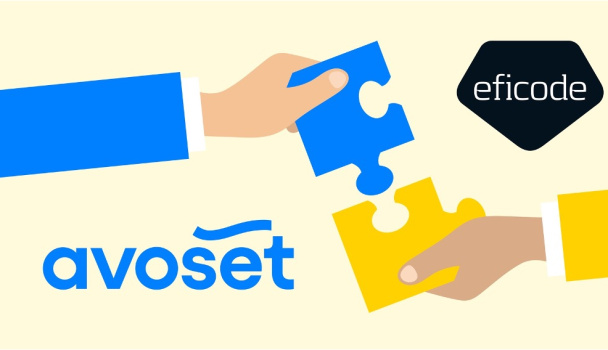Takeoff Academy: Best Practices in B2B SaaS Marketing

SaaS marketers should first understand the customer’s problem, and only then consider the variety of marketing approaches. 13 companies took part in the Takeoff Academy workshop on “Best Practices in SaaS Marketing”. We summarize the workshop discussions below.
October 5 marked another ‘Takeoff Academy’ workshop, this time under the topic of SaaS (Software as a Service) marketing. Overall, Finnish companies are not particularly well known for doing stellar marketing, yet there are many ambitious companies that aim to change that. We also have companies and individuals who have lots of SaaS marketing experience worth sharing.
This particular workshop gathered a group of SaaS companies around the table: LATO Tools, Humap Software, Dear Lucy, Futures Patform, Videoly, Zero Keyboard, and Cuckoo Workout. We heard two interesting presentations, from Pia-Maria Halttunen who shared her experiences from setting up and running SaaS marketing for Silvadata (now part of Trimble Forestry) and from Paul Palojärvi who told the audience about the marketing experiences of Miradore.
Towards the end of the morning workshop, we also heard brief vendor presentations from four marketing companies, Sales Communications, Advance B2B, Loyalistic, and San Francisco, under the theme of “How we could help market your SaaS business with EUR 10k”. The informative presentations were appreciated by the audience, and we’ll also share the highlights from those below.
What problem are we solving?
Let’s start at the business core. The process of buying software is quite standard these days: Customers tend to follow rather similar paths when researching the options, finding alternative solutions, looking for the pros and cons and finally contacting the vendors.
The exact path of the customer naturally varies depending on the nature of the customer’s problem and a number of other things – and that’s the part that the vendor needs to understand inside and out.
What are the customers struggling with? How do they put their struggle in words; what are they searching online? “Do your keyword research and repeat it regularly to learn about the customer and the competitive landscape”, reminded Pia-Maria Halttunen.
Doing one’s homework sounds simple, yet this is the area where many companies cut corners. Both Pia-Maria Halttunen and Paul Palojärvi emphasized the need to actually talk to the customers in addition to relying of quantitative data obtained from their digital footprint.
We now understand the customer’s problem (we think, anyway). How to make the customer find our solution?
So, at the heart of the vendor’s marketing is the customer and their problem that needs solving. How do we get to match the problem and (our) perfect solution in the SaaS environment? This is where the marketing organization, tools, content and channels come to play.
From the vendor’s point of view, marketing is about building a hypothesis (of the customer’s problem), coming up with a strategy to solve the problem, testing a variety of marketing activities, and iterating based on data, experiences and feedback.
In practice, the vendor’s website plays a central role; we’re in online business, after all. The vendor’s marketing challenge divides roughly into four parts:
- Building a team that makes marketing happen
- Understanding the channels that work best for us in bringing customers to the website
- Understanding how the website performs in converting visitors into paying customers
- Not forgetting the customers once they are ‘hooked’ but making sure they are happy with our solution and stay that way, to the point of recommending it to others

We will list below a number of points and observations from Silvadata’s and Miradore’s presentations, grouped according to the above graph. The grouping is to help structure the discussion, yet it’s clear that the lines between activities are often lines drawn in the sand. For practical reasons, we also use bullet points (a lot of them!)
For a brief background about the case companies:
- Silvadata (now a Trimble company), founded in 1985 in Finland, specializes in the information systems and services related to private forestry. The Silvadata systems have 1,200 users in more than 150 organizations in different parts of Finland. Trimble Forestry, part of the global positioning solutions company Trimble, is revolutionizing the forestry industry, helping businesses transform data and processes into strategic actions.
- Miradore helps companies manage their IT devices since 2006. The company now sells subscription-based licenses online for SME customers. The average deal size is EUR 2,400 per year. Annual revenue today is EUR 4 million, of which 40% comes from the US, 15% from the UK and the rest is split among several countries globally.
SaaS marketing organization and leadership
- Startups should manage the following areas of
marketing from the beginning:
- Professional website and that includes relevant content for buyers and presents product plans properly
- Search engine optimization (SEO) and google AdWords
- Social Media channels: Choosing the right balance with LinkedIn, FB, Twitter etc.
- Other means of marketing: Customer events, other media etc.
- In SaaS business, heavy focus on first 3 but especially in early stages will need other means as well
- Recognize marketing opportunities: The key is to be visible and make noise every time there is something to say: New product release, new customer win, geographical expansion, new Board of Directors, everything is worth marketing
- Always market the benefits and ROI of your product
- In-house, outsourced or both?
- Name a project owner
- Create content marketing strategy together with people from all departments
- Have in-house resources
- Use freelancers
- Engage an agency for consultation and special tasks (SEO etc. where you’ll not be on the edge as things change very rapidly. Conduct audits!)
- What in-house resources?
- Project owner
- Community manager (social media)
- Editor / content creator / content creator
- Concretize your understanding of the customer into buyer personas
- Create a marketing communications concept (look and feel, tone of voice, localization, etc). One size (.com website, all English) doesn’t necessarily fit all. Use local agencies where needed.
- Calculate a customer lifetime value to know how much it pays to invest in getting a customer!
- Always calculate a ROMI (Return on Marketing Investment)!
- Marketing is all about helping the customers and, as a result, selling your business.
- Remember nurturing: Is your plan consistent across channels and the website? How do you upsell and cross-sell?
- Know the standard industry language: MQL’s and SQL’s (Marketing Qualified Leads and Sales Qualified Leads, respectively) are commonly used, and investors expect potential target companies to know these figures for their own businesses. Not part of the everyday vocabulary in Finland quite yet but should be.
- The 40-40-20 rule
- 40% of your efforts should be generating traffic
- 40%: address bottlenecks
- 20% (or more): TEST and analyze, do it again in a better way
- What’s the role of CSM (Customer Success Management)? Should be embedded as part of the marketing effort and organization.
- Often in the early stages the challenge is, you have few data points and if you’re trying to make decisions based on those as to why your succeeding or failing
- The freemium model can actually work! Converting freemium: If there are customers that are actually using the product, it’s possible to find a way to convert them into paying customers
- Define the marketing and sales funnel and measure it à It’s easy to talk about but requires that you get your hands dirty
- Keep an open mind – what’s going to work and what not is rarely clear at the start, so try things out (fast), fail fast, move on. One needs good resources; people in the team who can react fast
- Measure (there are readily available metrics but it may also make sense to create one’s own), Share, Learn
- Don’t reinvent the wheel: Check other SaaS companies and utilize ideas for yourself. For instance, “ten best landing pages” through Google are easily found; it’s just about taking the time and doing research
- Steal with pride
- Team: Look for the local language natives
- Use agile methods from software development, apply two week sprints in marketing! Build two week plans, including stunts and hacks alongside overall awareness building.
- Be careful with ‘marketing best practices’; only use them with a strategic mindset, or you’ll just end up using a bunch of tactics that everyone else uses, too
Channels of traffic
- Do digital marketing research: Does your terminology match that of the customers? Who are you up against (competition, market shares)? Repeat research once a year or so; the terminology and search behavior evolves over time.
- Examples of channels
- Display advertising
- SEO
- Paid search
- Social media advertising
- Content on LI, FB, Twitter (plus other SoMe channels if relevant for B2B)
- Blogs
- Newsletters
- PR
- Events
- Put your marketing investment in channels where your customers are! If you don’t know, find out before investing. Do not assume.
- Your media mix consists of paid (ads), owned (what you put out there yourself), earned (media coverage, articles), and social media, right balance depends on resources and targets
- Email marketing is good but only for valid leads, no spamming.
- Content is king, but what kind of content? Create (inbound) content that’s helpful, inspiring, and relevant considering what your customer deals with on a daily basis. Remember, great content is great service, and even though producing it costs something, according to research content marketing costs 62% less than traditional outbound marketing.
- Make marketing visual by using videos and visual content.
- Understand the productivity of each channel that brings traffic to website
- Common metrics for the Channels performance: brand awareness, engagement with content, lead generation
- Be credible with content. There’s a big difference between native and non-native language (relates to localization)
- There are no readily available ‘right’ answers to the selection of marketing content, channels and tools but it’s a lot of work to find the ones that are best for you
- Advertise before product launch, landing page (Google AdWords worked for Miradore). Before the launch, already got 2000-3000 email addresses, which served as a market validation as well
- Press releases can also work, although only the first two releases were valuable for Miradore, those thereafter were not.
- Get logos, quotes and success cases. Add the company and product profile to all relevant review and referral sites.
- Facebook didn’t work for Miradore; lots of followers but ads didn’t perform well. Currently exploring LinkedIn
Conversion performance (website)
- Traffic doesn’t help you if your website doesn’t perform. Even a better conversion rate with the existing traffic may improve results significantly.
- Do A/B testing with the website but only test one thing at a time
- A lot of website pages are for viewing only; they miss clear CTA’s (Call To Actions), which impacts the conversion rate
- Have a lot of landing pages in different parts of the website
- Track the content: How much of a blog post the audience generally reads? Can be analyzed with Google Analytics or HubSpot and the likes
- Common metrics for the website performance: Engagement with content, conversion rate on landing pages, sales
- Out of Miradore’s online customers, 50% still need an invoice while the rest are paying by credit cards. Company policies influence the credit card purchase sizes more than geography. Generally, the smaller the deal size, the more people are willing to make credit card purchases
- Miradore found through research the three features customers appreciated the most – ease of use, attractive pricing, amazing support – and placed these messages all over the website and other marketing materials
- That the website looks pretty to the eye doesn’t automatically translate into larger sales! The website’s performance may be influenced a lot by other things than visual appearance.
- In Miradore’s experience, website chat (now 30 to 50 chats per week) converts very well
- Chat (now 30-50 per week); convert very well
- Make it as easy as possible for the customer to contact you!
- Miradore launched “MiradoreMan”, another experiment. The cartoon figure on the website seems to work in the targeted SME sector
- Support is critical for conversion, depending on your business, make sure you have a proper support function to help convert clients
Customer experience
- Customer journeys are not one clear path; they are a bunch of very different paths
- “How does your day look like”; map out the customer’s journey
- Financing your SaaS business: Understanding the customer well is also important for the investors and may influence investment decisions a lot
- Common metrics for customer experience phase: Upselling and cross-sell figures, customer satisfaction, retention and loyalty
- If you want to really understand the customer’s thinking, do research beyond online; talk to the customers, conduct in-depth interviews. Spend time talking to the customers. Survey, interview, understand how do they behave online and how they found you, not everyone is that digital savvy.
- Miradore’s experiences from doing customer
interviews:
- Contact everyone
- How did you find us?
- Why are you interested in MDM?
- Why would you buy from us?
- What type of companies are they?
- Feedback about product?
- Find patterns – Share findings with the team – LEARN
- Critical for customers: Outstanding support (ammunition for differentiating from the competition)
- Customer Success Management (CSM): Organize as part of the marketing and sales team
Marketing vendor presentations: Insights and resources for inbound marketing and PR
Sales Commmunications
Jani Aaltonen from Sales Communications stressed the role of inbound marketing, as outbound marketing is nearly dead, especially with the GDPR in place. Google and Facebook are the big channels, and this is where the lion’s share of the marketing euros should go. Aaltonen stressed the importance of getting attention with useful marketing content; When customers are searching and your company gives them an answer, they are most likely to buy. Plus, did you know:
- One billion messages are sent annually to companies through the Facebook messaging app
- Traditional media is 4,5-5 times more expensive than online media
- 8 out of 10 most visited websites in Finland are not Finnish anymore
Advance B2B
Edward Ford from Advance B2B presented the audience a SaaS marketing framework, the ‘Mission Matrix’ that has earned a nr 1 position on GrowthHackers. The framework is useful for a SaaS company when choosing tools and inbound marketing methods based on who they are targeting and what their sales strategy is. Like this:
- Small and medium businesses
- your product is going to be your best marketer
- Automate everything
- Enterprise customers: direct sales
- Inbound marketing to serve as lead generator to the sales team
- Customize everything
- Middle mission
- Hybrid funnel
- Convert from free to paid
- Inside sales
- “Do everything”
San Francisco
Juhani Polkko from the PR and marketing company San Francisco pointed out how media coverage can help a SaaS business (that’s often swimming in a red ocean) create a brand and win the trust of potential customers, that way lowering the threshold to start using the company’s product. In other words, why is the top part of the marketing and sales funnel important:
- Brand credibility
- Outbound sales is NOT dead!
- Backlinks (improves SEO)
- Mid-funnel performance
- Direct traffic
Loyalistic
Antti Pietilä from the inbound marketing software company Loyalistic advised SaaS companies to first nail their messaging, targeting, processes etc. before getting busy scaling the activities abroad. Scaling too early easily results in companies being in a ‘search game’ instead of an ‘execution game’.
Finnish companies easily jump into the conclusion of having discovered the perfect product-market fit or a scalable business model, while in reality there’s still a lot of homework to be done. Which brings us back to the ‘spend time talking to the customers’ point presented by the case companies. ‘Nail it, then scale it’ like the famous book says – that’s the way of getting the most value out of inbound software tools as well.






